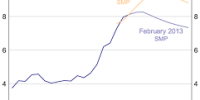According to recent research, a small percentage of financial landlords, including institutional investors and private equity firms, possess four times more of Montreal’s rental housing supply than was previously thought. Neighborhoods with more financial landlords are also experiencing higher housing stress levels.
Researchers from the University of Waterloo and McGill University created a new method of identifying networks of property ownership hiding behind anonymous numbered companies to determine the extent of rental units owned by financial landlords in the first thorough analysis of its kind in a North American city.
With its low rents, plentiful supply, and strong tenant rights, Montreal has long been regarded as a renter’s paradise. Yet, the researchers found that financial landlords are increasingly controlling the housing market.
“We discovered that financial landlords own almost one in eight Montreal rentals,” said Cloé St-Hilaire, Ph.D. student in Waterloo’s School of Planning. “In central neighborhoods, like Ville-Marie and Le Plateau-Mont-Royal, their stake in the market is even higher.”
Financial landlords have been linked in the past to gentrification, displacement, eviction procedures, and rent hikes that are too high. Even though this trend in the housing market is starting to gain more and more attention, there hasn’t been much research done in this area because there aren’t many complete data sets that are publicly available and because corporate ownership structures are opaque, hiding behind multiple layers of anonymous numbered companies for each of their properties.
We discovered that financial landlords own almost one in eight Montreal rentals. In central neighborhoods, like Ville-Marie and Le Plateau-Mont-Royal, their stake in the market is even higher.
Cloé St-Hilaire
In order to overcome these obstacles, the researchers combined publicly available census data with four privately advertised rental market data sets from Craigslist and Kijiji, business register data from the Province of Quebec, and property ownership data from the City of Montreal.
“We found two groups that were most exposed to financial landlords one precarious, racialized, and student group, and another more affluent group located in newer rental units,” said St-Hilaire, the study’s lead author.
“The impacts on these groups are real, and our research highlights the contradiction between the landlords’ profit expectations and housing’s primary purpose to fulfill the human need for shelter.”
In order to comprehend the rental housing market, plan for urban development, and safeguard tenants, the study emphasizes the necessity for open and transparent data. Moving forward, the researchers hope the method can be adapted in other North American cities.
“Ongoing research in this area will help identify local and global patterns of financial ownership and equip policymakers, planners and advocates with information to better regulate rental housing markets,” said Martine August, associate professor in Waterloo’s School of Planning. “However, this will require governments to make property ownership information publicly accessible to facilitate public scrutiny of residential land use.”
The study, High Rises and Housing Stress: A Spatial Big Data Analysis of Rental Housing Financialization, appears in the Journal of American Planning Association.
















